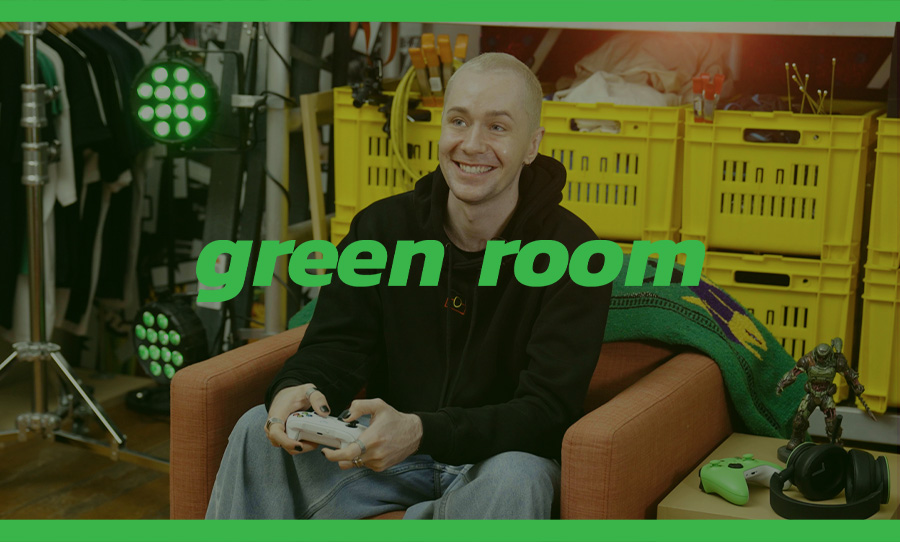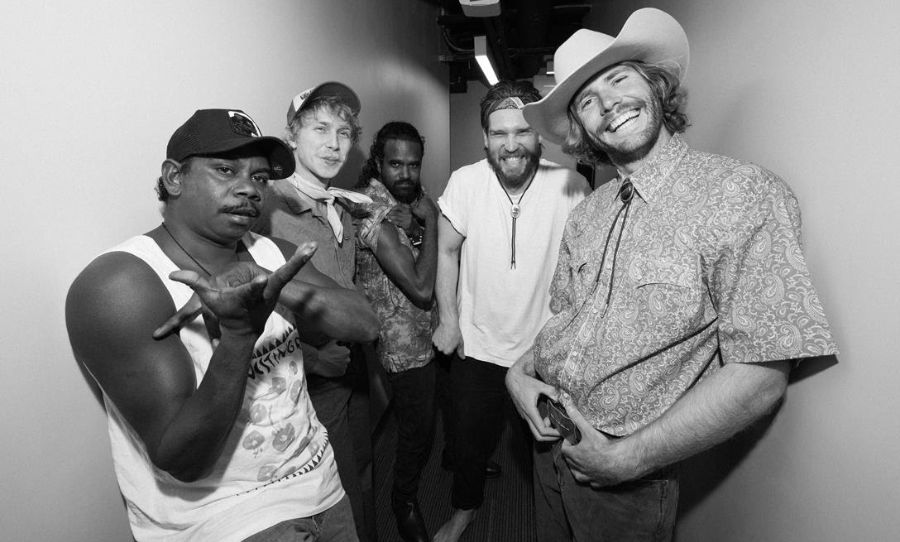Words by Adaptors.
Anybody who has ever written or even attempted to write a song will know the difficulties that can be faced in getting everything balanced and just right. The most difficult thing to adapt to, though, is the fact that there’s no set way to write a song.
It can start with a melody, a drumbeat, a lyric or even just a conceptual idea. We’ve dissected our three latest singles, including Crystal Eye, to give you an idea of what we’re about and what goes into an Adaptors song. We’ll start with where the revision of our sound began, with the 2017 release of Closer.

Ever wondered exactly what goes into writing a song, start to finish? Adaptors share their process, and the stories behind their last three singles.
Closer
The lyrics to the track were inspired by a short story Abhishek read during the time of writing. The story revolves around an individual who is torn between the starry-eyed optimism of the future and the inescapable struggles of the present.
Closer began as a vocal melody in Abhishek’s head with some rough arrangement ideas, such as a chilled-out chorus alternating with a faster and more intense verse section. However, as chords were built around the melody, we realised the contrast was too stark and the verse had to become sedate as well. The overall relaxed atmosphere of the song is provided by the R&B-ish drum part (a la Timbaland-produced Aaliyah) and the Frusciante-like rhythm guitar part.
Further Chili Peppers influence can be discerned in Keelan’s bass part, inspired by Flea’s melodic movement between low and high notes, often fifths or octaves. This was reworked to create a circular chorus hook with a 7th note. The verse part for the bass had to #adapt to the chord changes of the updated rendition, retaining its key features but becoming more restrained and following the drums more deliberately. We then decided to increase the tempo to shake away the lethargy of the demo.
Bineal added a last-minute, spidery guitar line inspired by Radiohead’s Separator the day before recording, and this ended up ironically following Keelan’s groove instead. The chorus and verse bounce off each other almost like an internal dialogue and this fleshes out the concepts of duality and perspective that recur in our subsequent singles.
Gossamer
Conceptually, Bineal’s lyrics take a metaphor of gossamer (thin, barely visible, silk-like) as a feeble way to hide one’s true self. The idea is attacked to show reality must eventually be faced. The song can be seen in two ways; an attack on someone for not being true to themselves, and as a love song about broken trust. This is especially emphasised through the moon metaphor “…a mere reflection, a lie.”
The vocal part was also originally sung in the lower octave, inspired by several Nick Cave songs. However, the part was later doubled an octave higher to add more presence and power, which adds another layer of duality.
Extensive listening to David Byrne’s funky, scratchy, yet paranoid style in the Talking Heads largely inspired the main guitar riff of Gossamer. The textures on U2’s Achtung Baby have also had a big influence on us collectively, which can be heard in the almost industrial feel of the scraping riff and pounding drums. Bineal’s aim was to build a song on a super-tight rhythmic groove with everyone accenting the same notes and this was achieved by tying the drums with the guitars.
With the tight groove building in the verse, we needed an emphatic, yet contrasting, chorus to match up to the powerful vocal. Abhishek’s idea for the chorus guitar leads was to have something cut through and support the vocal melody. Keelan’s bass leads serve a similar role, breaking into mini solos by the end of each repetition, guided by Bineal’s suggestion to play “something bluesy”.
Crystal Eye
Ideas of perspective and duality form the core of Crystal Eye, with the so-called crystal eye acting as a metaphor for clarity of perspective. The chorus brings in the duality aspect with “I want to see what you see, through your crystal eye”, showing the human desire to see things the way others do. Abhishek’s idea to divide the vocals into a duet really added weight to the duality aspect, making the song work as a dialogue between another person or even the same person in a different timeline (a future self).
Few people would imagine Beatles or Byrds-like jangle guitars on hearing Crystal Eye, but that is how the song started: as an acoustic rhythm part with ringing open B and high E strings to maintain a strand of hope over the darker, more ambivalent power chords underneath. Bineal quickly translated this to a strings/keyboard arrangement to better accompany the power and attack of the piano, fuzz bass and fast-paced electronic drumbeat. The disparate elements combine to create a soundscape not unlike Massive Attack’s Unfinished Sympathy, or even Hans Zimmer’s soundtrack work as Keelan and another poiznted out.
The song is kept grounded by the ever-present piano chords and fuzz bass, occasionally broken up by Keelan’s penchant for bass slides. The coda contains a previously unused bass part Keelan conceived during the demo session that followed the same octave motivation as Closer. He created a running melody for urgency and double-tracked the bass to make the most of the low fuzz notes.
Subtle changes are brought in by the bleeding guitar-work through the verse, which invoke tracks like There There by Radiohead. These changes slowly ring out to the listener until they break into a more jarring and elephantine group of bends at the end of the song. The bends are not dissimilar to Jimmy Page’s in Dazed and Confused, structured instead in an ascending pattern to retain the hopeful aspect of the song rather than the terrifying, descending patterns of the Zeppelin classic.
Adaptors will be launching Crystal Eye live at Oxford Art Factory on Saturday, February 10th. Find out all the details here.



